Dandy Chutes

There's a clear winner in my long-running battle with dandelions in my yard, and along the way I've learned to appreciate the unique attributes of this special plant.
We all know dandelions. They are one of the world's most widespread flowering plants and they are now naturalized on every continent except Antarctica. In part, their success is due to the fact that they readily adapt to a wide range of conditions, elevations, and climates, but there's more to their story than that.
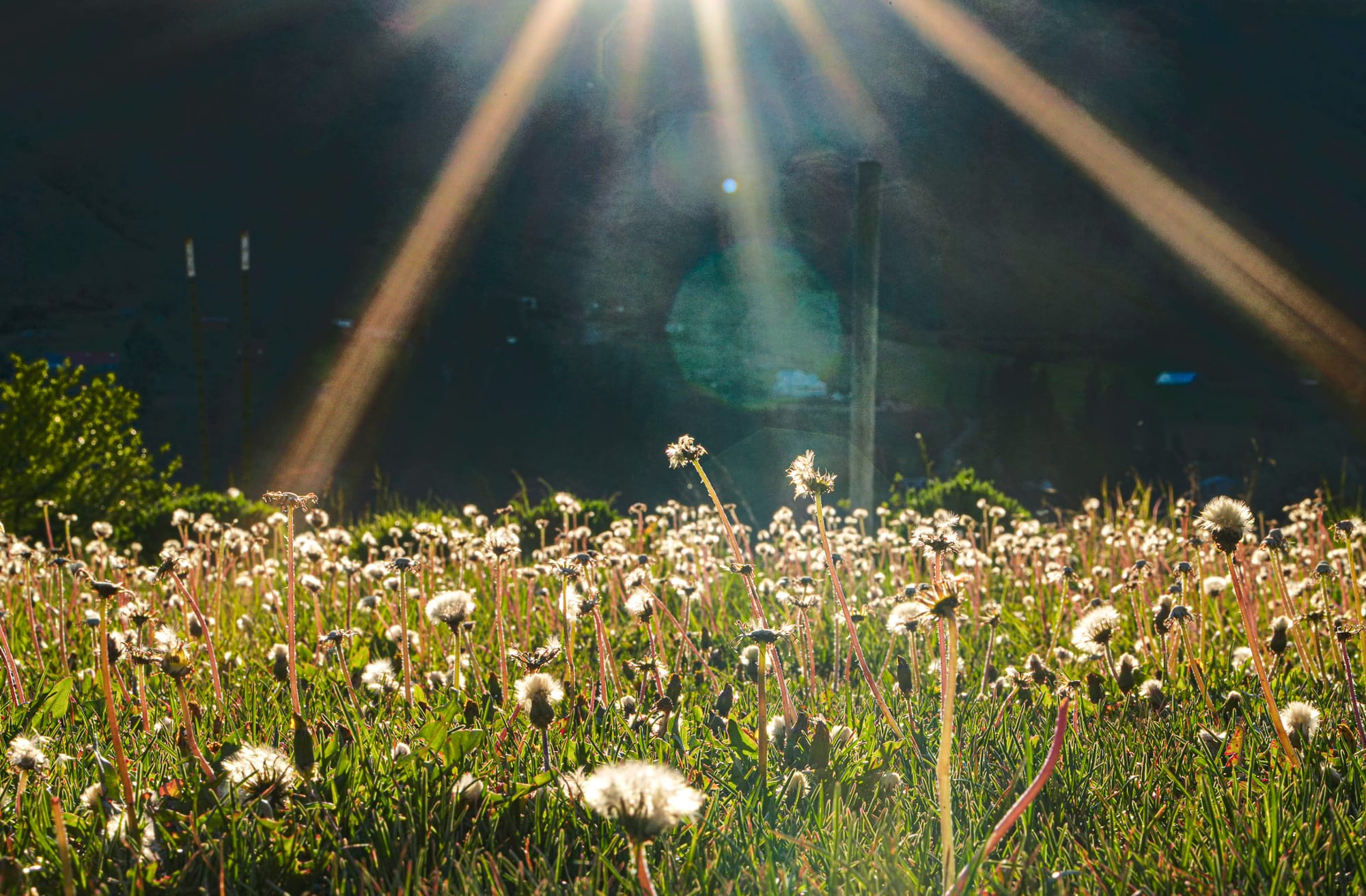
First off, the genus Taraxacum is taxonomically complex, with countless diploid (sexually reproducing) and triploid (asexually reproducing) forms, organized into 50 sections (recognized groupings of species) and 3000 agamospecies (asexually reproducing biotypes that are equivalent to species). In the British Isles alone, there are 234 recognized microspecies, but for most people these plants are known simply as dandelions.

The most important moment in a dandelion's life is when it decides to release its seeds in search of new homes. Notice that I use the word "decides," as if the dandelion is intentionally or consciously making a decision, but in fact this process is so complex and finely tuned that even scientists speak of it as being an informed decision like an animal makes.
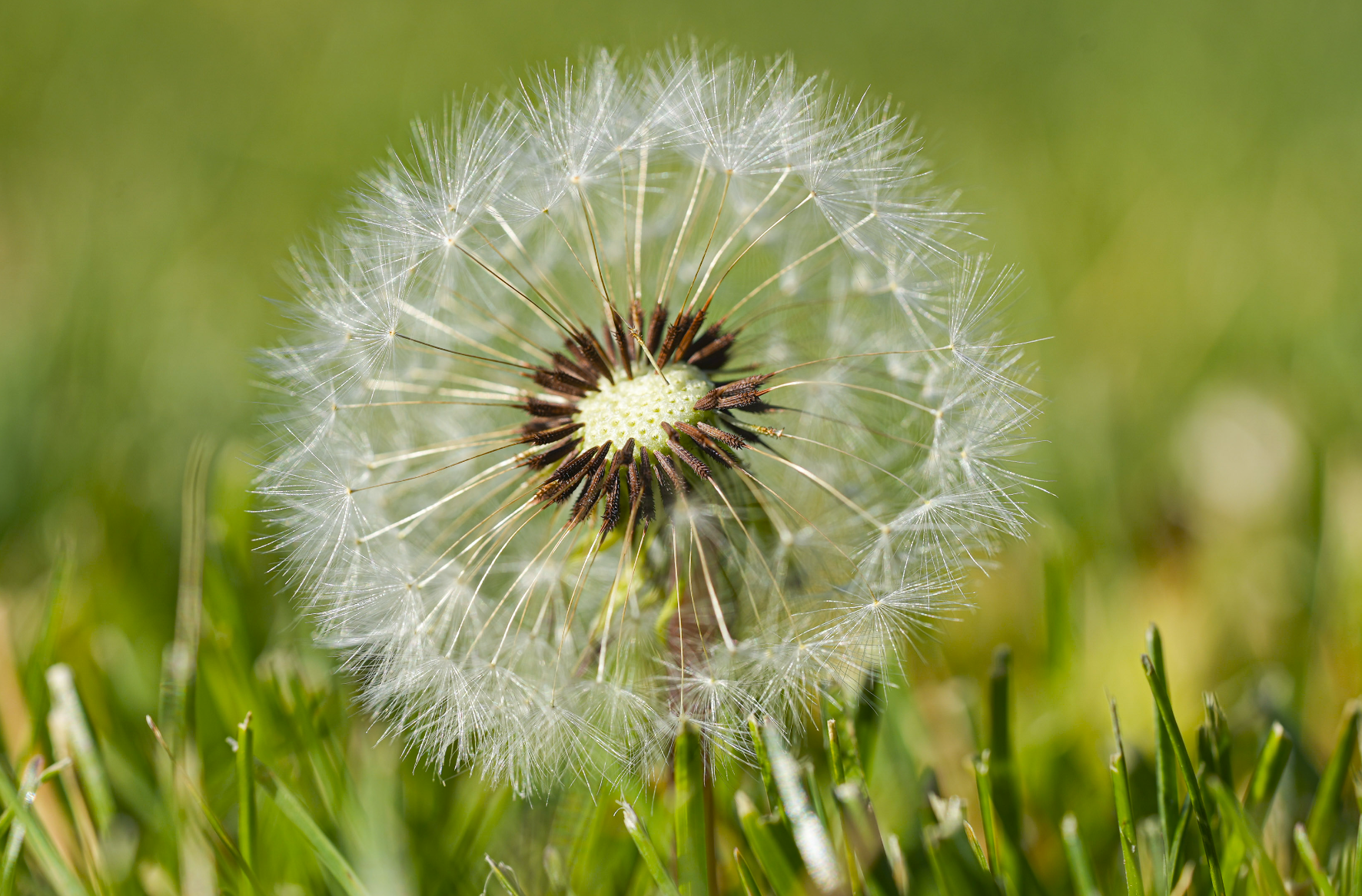
Dandelion seeds are one of nature's best dispersers, but they don't passively disperse their seeds. They adjust the structure of their seeds to match the weather and pick the right moments to set them aloft, because by making the right choices their seeds might end up traveling over 60 miles.
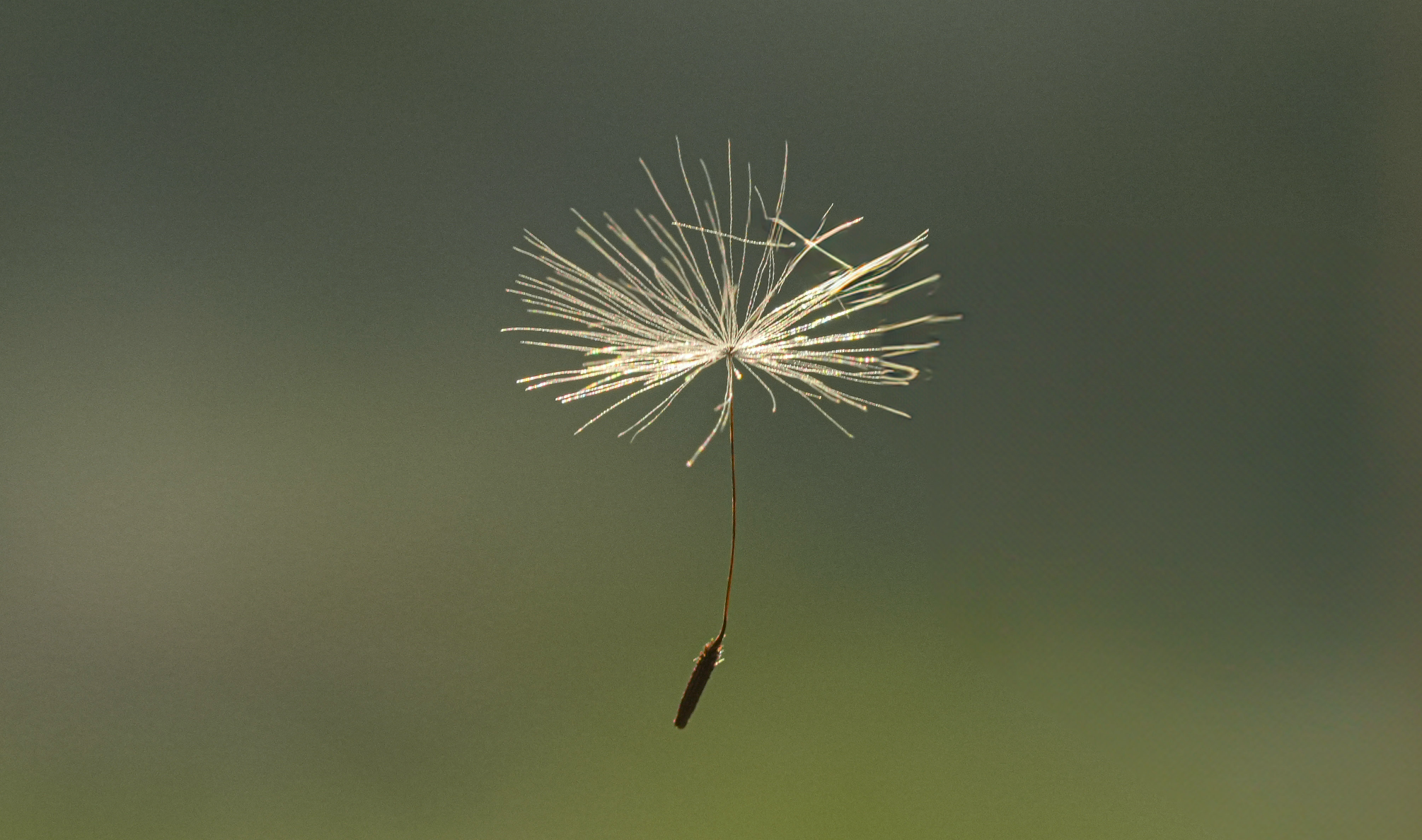
Dandelion seeds are tethered by a long, thin tube to a cluster of 100 bristles that spread out to form a "parachute." Scientists have long known that these radially arranged clusters of bristles (pappi) spread open in dry conditions and close up in wet conditions, but researchers have only recently discovered that this mechanism is far more complex than they realized.
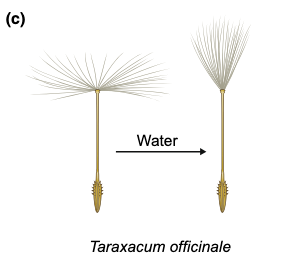
Most known plant movements are governed by bilayered structures, in other words, two layers of cells respond to external parameters in two different ways, causing plant stems, leaves, or roots to turn or move in a particular direction. But in the case of dandelions, the base (or apical plate) that holds the dandelion's 200-300 seeds is instead composed of a sophisticated and precisely structured radial arrangement of at least four different types of tissues that work together to control the reversible opening and closing of a seed's bristles.
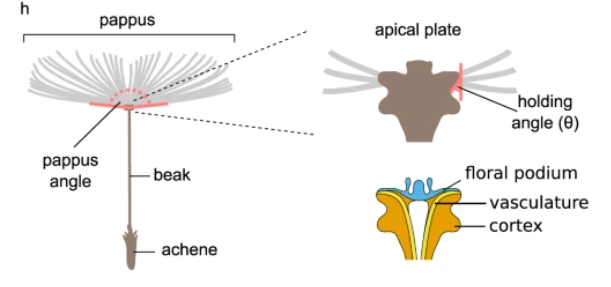
Some of these tissues are hydrophilic and absorb water, while other tissues are impervious to water, and these tissues may be compartmentalized in discrete areas or woven together to create different properties.
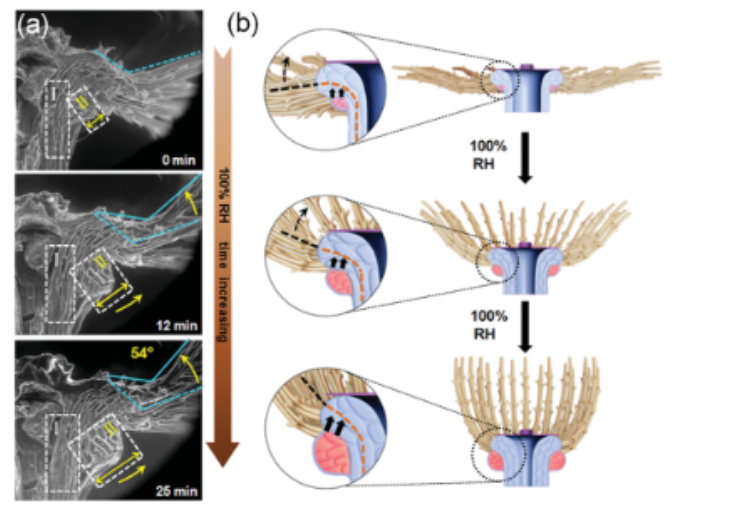
As a result, dandelions begin responding to the presence or absence of water within minutes, and even more importantly these movements are efficiently coordinated so the extremely fine bristles don't tangle or break.

When conditions are just right, the bristles spread open and lift seeds off the plant in even the slightest gust of wind. Although seeds weigh less than a milligram, and the bristles are composed of hollow cells, these tiny parachutes remain airborne because they create a remarkable phenomena known as a "separated vortex ring."
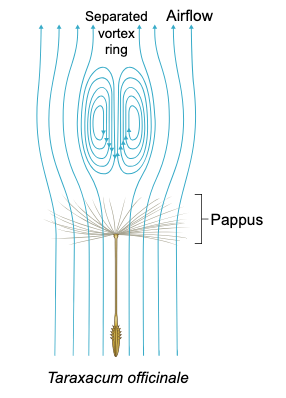
Vortex rings are zones of turbulence that form around any object moving through a liquid or gas. In most cases they produce a destabilizing effect, but in the case of dandelion seeds the vortex becomes detached because air flows both around and through the openly spaced bristles. As a result, the separated vortex ring stabilizes and enhances the lift of the dandelion seed, allowing it to travel further before sinking to the ground.
You can briefly see the vortex above the seed carrying it along in this clip. Video from Cummins et al.
What's even more amazing is that there times when a dandelion wants to disperse its seeds as far as possible. For example, when the plant is under attack from root-eating grubs in the soil it produces smaller, lighter seeds that fly beyond the infestation of grubs. A plant also wants to disperse its seeds to increase its genetic diversity.
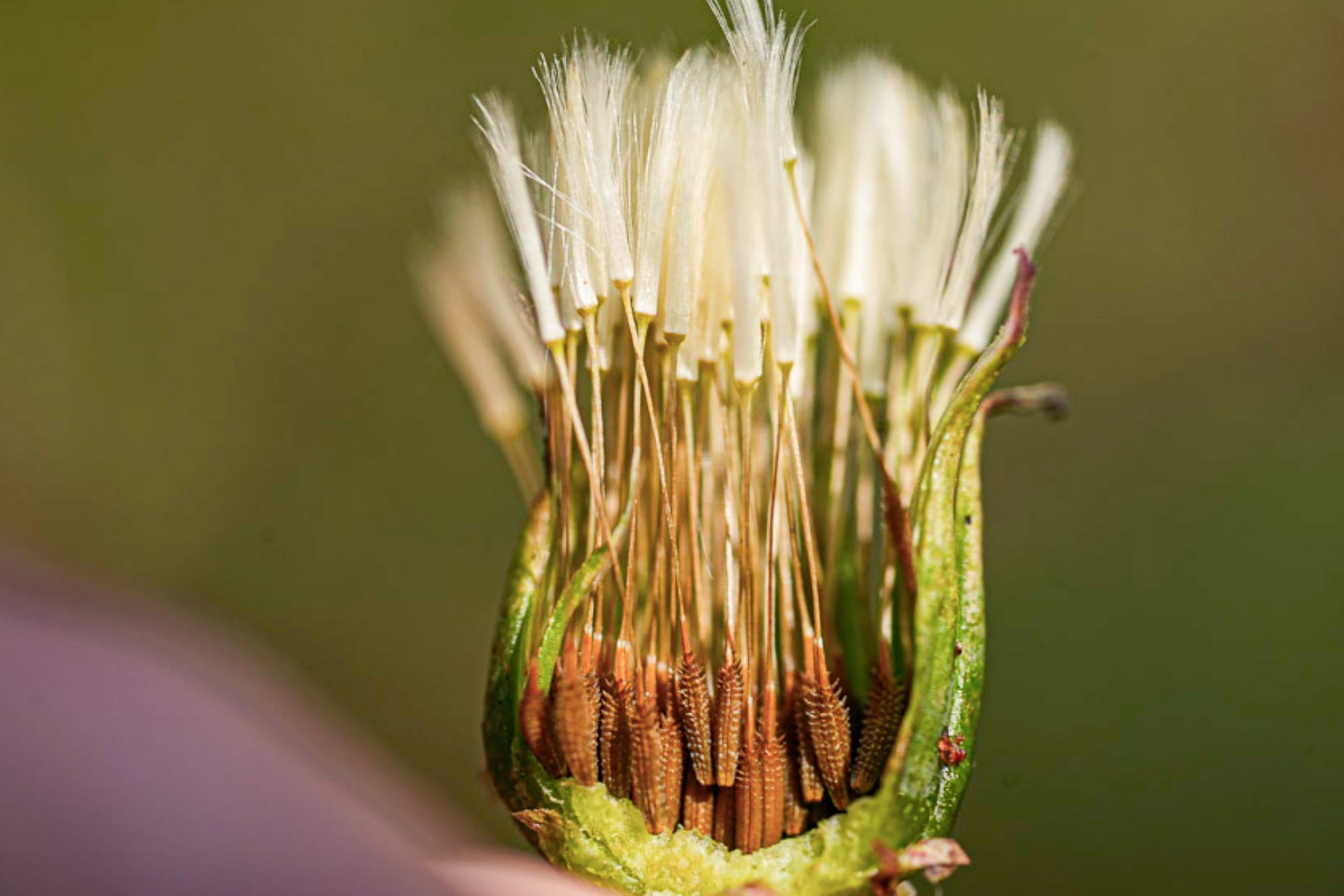
And there are times when a dandelion doesn't want to disperse its seeds. For example, the wet conditions that cause bristles to close up means that the local soil is also wet enough for seeds to germinate, and it means that the plant might want to drop its seeds as close as possible to take advantage of these condtions.
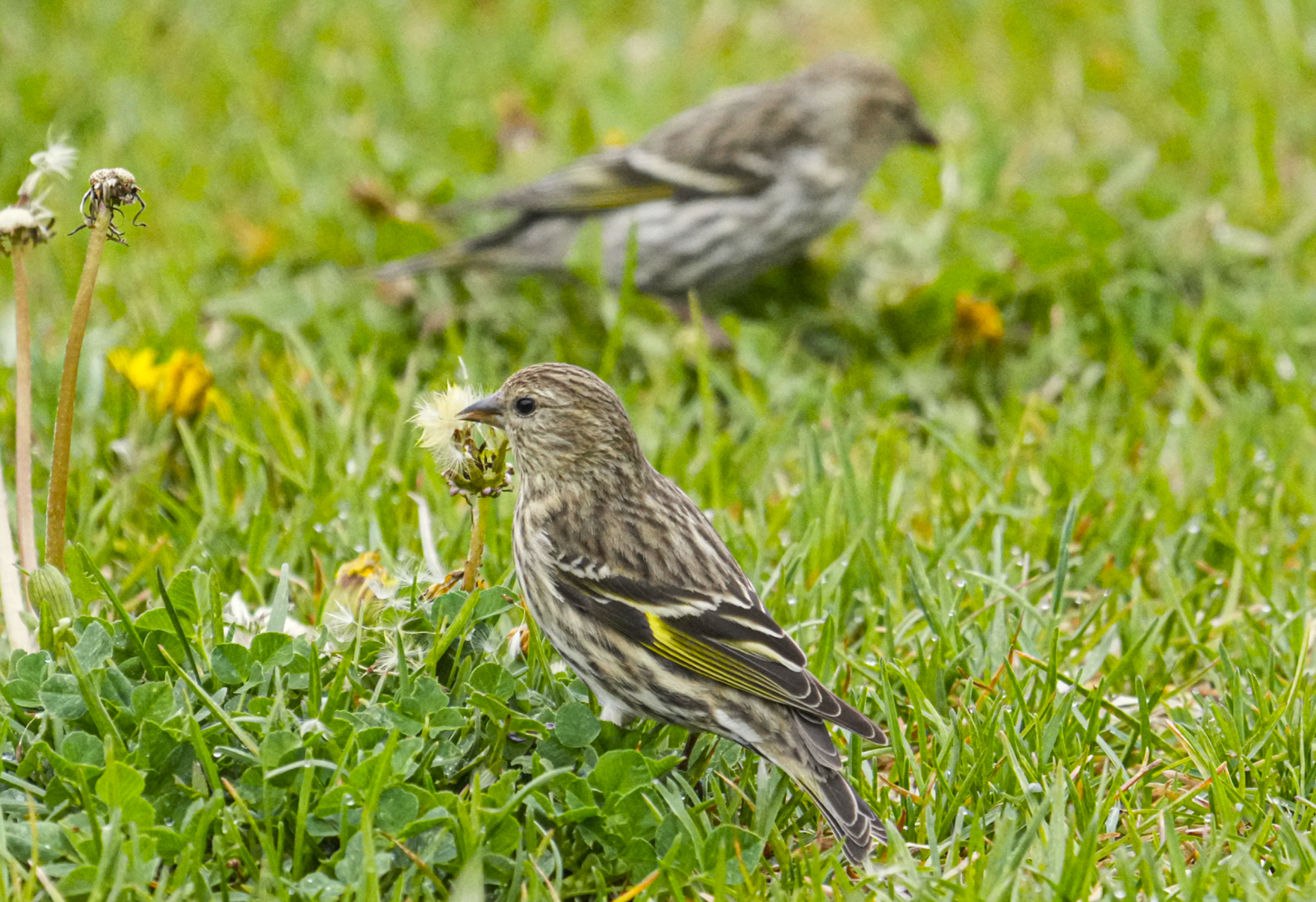
All of these factors combine to give dandelions a remarkable global significance. They help heal and improve soils, they provide abundant foods for birds and insects, and they are beloved by many cultures for their symbolic, nutritional, and medicinal values. What's not to love about this plant?

Member discussion